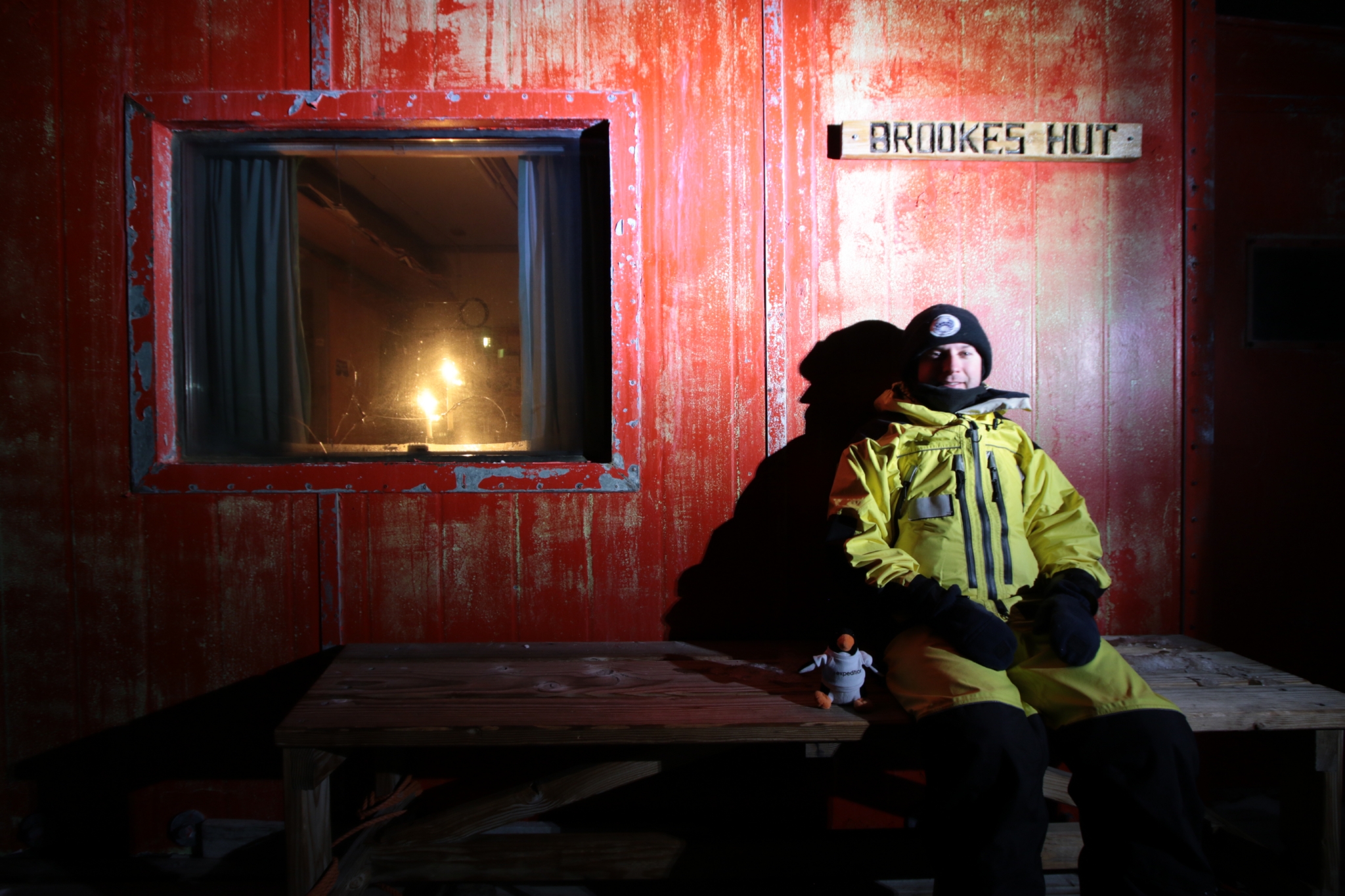This latest blog brings you some unique video and photos of some phenomena that occur in Antarctica. Even though the video and photos don't do it any justice, you just had to be there to experience it yourself!
I'll start off with probably the most spectacular sunset of all time.... now I know I keep saying that, but somehow each sunset has a surprise and ends up being better than the last... even though this one was pretty hard to beat! With the sun low on the horizon skimming across the tops of the icebergs it had been snowing for most of the day. As the snow cleared there were ice crystals in the atmosphere. When the suns rays interact with these ice crystals the reflections at a 22° from the sun create a phenomena known as Parhelia or commonly known as sun dogs. These occur either side of the sun and make a small rainbow effect. These were the biggest sun dogs I've seen and the most brightest. Like a rainbow it was like they were located so close you could walk out to them and touch them. But there is no pot of gold at the end of these..... or is there?
3 images stitched together to make a panoramic photo. View from Davis station overlooking the sea ice.
Sun parhelion over Anchorage island.
Sun parhelion over Gardener island.
In the photos you'll see the seal tracks winding and weaving about. These are from the Elephant seals leaving the station across the sea ice in search for open water. These tracks were an indent in the ice, due to the weight of an Elephant seal. Then it snowed, then the high winds blew all the snow away, leaving just the trails which are now higher than the sea ice! That's a surprise!
Talking about the pot of gold.... well as the sun set and the sun dogs faded away, another phenomena was about to begin. This next one is called a sun pillar or solar pillar. Once again the suns rays is reflected off these tiny ice crystals in the atmosphere to create a pillar or column above the sun.
Sun pillar or Solar pillar extending vertically from the setting sun. View from Davis station overlooking the sea ice.
I love the sounds of the sea...... yes believe it or not the sea still makes sounds when frozen. In this next video you'll hear the sound of large chunks of ice rubbing against each other due to the movement of the tides. At first I was like, "Did I just hear that" then I was like "Wow, that's amazing!" This was filmed along the beach where the tide crack forms. Each day with the rise and fall of tides the sea water is forced through the tide crack. What we have to understand is the the sea ice is constantly moving.
I have put together a time-lapse video of "My Birthday aurora". I was about to have breakfast before work when I saw on the screen that the aurora was very active. So I went outside for a look and was greeted by a wonderful aurora display. I skipped breakfast, ran back inside to grab my camera and left it outside taking photos. After about an hour I had to rescue the camera as a layer of frost was beginning to build on the lens and body.
At this stage the aurora was bright. You could clearly see some greens, but was mostly white in colour. I was in a light polluted area which would have washed out some colour. You can see greens, reds, yellows.
I love this photo, considering my favourite colour is Mediterranean blue. Here these is a nice beautiful blue and the aurora curtains behind are green, purple, yellow and orange!
Below is the time-lapse video. (View in HD for best quality).
Later that evening we celebrated my birthday in style. Nina's bar got moved upstairs and we had dinner in the lounge. Followed by a massive ice cream cake. It's that big that one week later we are still eating it.... The gift that keeps giving.
Someone thought it would be funny to take one of the biscuits and shove it in my mouth for a photo... ha ha
Dave, John and I went out along Dingle road last week to do some maintenance on some remote measuring experiment and the automatic weather station. At the top of Sentinel Knoll provides a great view across the Vestfold hills. From here you can see Davis Station, Lake Dingle, Lake Stinear and onto the plateau.
Looking across Lake Dingle and Lake Stinear on the right. Above lake Stinear there are more of the Vestfold Hills. Above this it looks like a layer of cloud (very distinct grey line), this is not cloud, this is the plateau. This is were the ice cap of Antarctica meets the Vestfold hills. From here the height of the ice rises to around 4km high near the south pole.
Who doesn't like reflections?I can tell you I love them. I love this ice shelf tethering on the edge of Lake Dingle. I've been waiting for a still day to get the reflections off the water.
Keep up to date with This week at Davis Station - Updated every Friday.
I am starting to update other areas of my website. Because there has been a lot of recent talk about aurora's I have put two of my presentations up on my website. Click on Presentations on the menu bar.
Please like my facebook page, you'll find regular updates and photos in between my blogs.
Some of the other winter expeditioners also have blogs of their experiences here in Antarctica. Make sure you check out Absolute Antarctica and Apoleapart.
Stay tuned for more updates. I am starting to work on my video of my departure from Australia and arrival in Antarctica.... Can't wait until it's finished!
~Aaron.








































